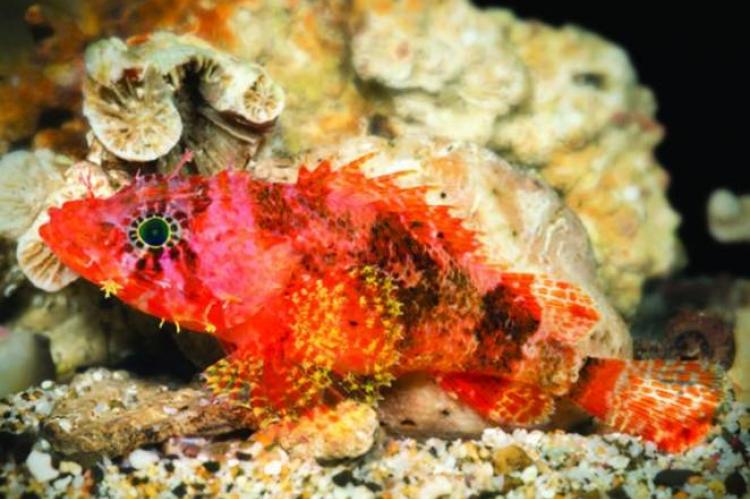New Caribbean scorpionfish discovered
Residing at depths 100 metres, species has long evaded scuba divers
Researchers from the Smithsonian’s Deep Reef Observation Project (DROP) have discovered a new scorpionfish species off the Caribbean island of Curaçao. Inhabiting depths between 95 m and 160 metres, it is the deepest-living member of its genus found in the western Atlantic Ocean. “The 50-300 m tropical ocean zone is poorly studied -- too deep for conventional SCUBA and too shallow to be of much interest to really deep-diving submersibles,” said DROP lead scientist Dr. Carole C. Baldwin.
Researchers employ a manned submersible known as the Curasub that can reach 300 meters below the water's surface, allowing researchers to study fish and invertebrates in the previously unexplored ocean zone.
Distinct
Researchers named the fish Scorpaenodes barrybrowni after Barry Brown, a freelance photographer that works with DROP. While 29 species of scorpionfish in the genus are recognized worldwide, only two, Scorpaenodes tredecimspinosus and Scorpaenodes caribbaeus, were believed to reside in the western Atlantic Ocean. DNA tests indicate S. barrybrowni is genetically distinct from both species.
It is distinguished from other scorpionfish by its distinctive bright orange-red colours and more elongated fin rays. It will be known as the Stellate Scorpionfish, deriving from its star-shaped yellowish spots and the radiating pigment markings accentuating its eyes.
To date, over 30 fish and invertebrates have been discovered by DROP researchers in the southern Caribbean, but many have yet to be fully documented. Baldwin knows more will be found by DROP soon, especially since the Curasub has only explored an area of about 0.2 square kilometers. “Stay tuned for more new discoveries,” said Baldwin. “We have only scratched the surface of our understanding of the biodiversity of tropical deep reefs.”





























